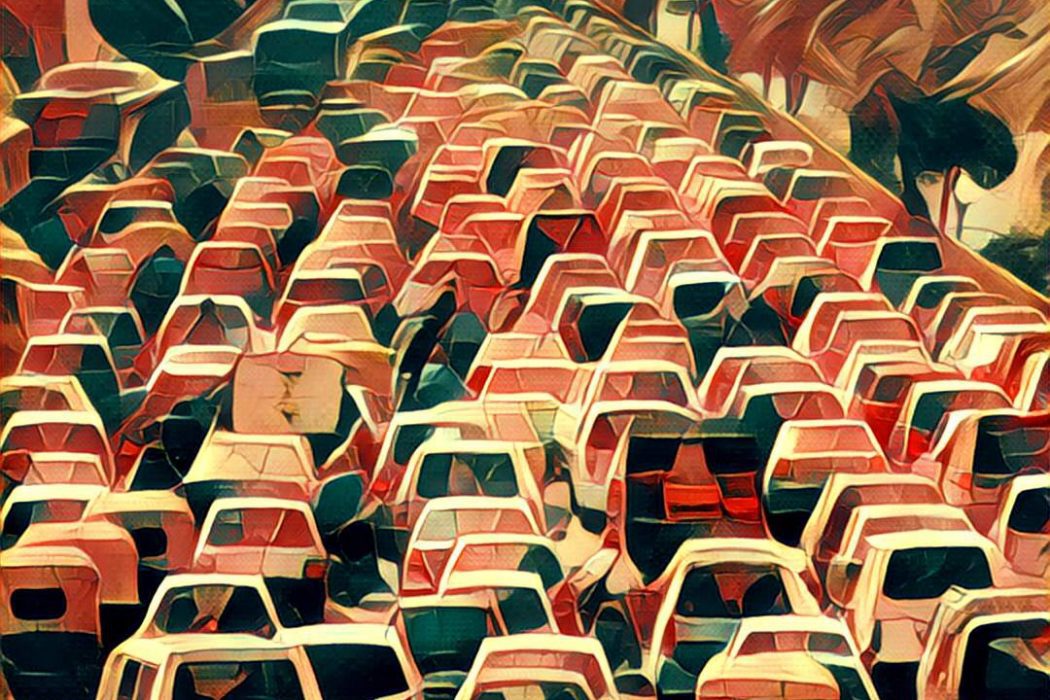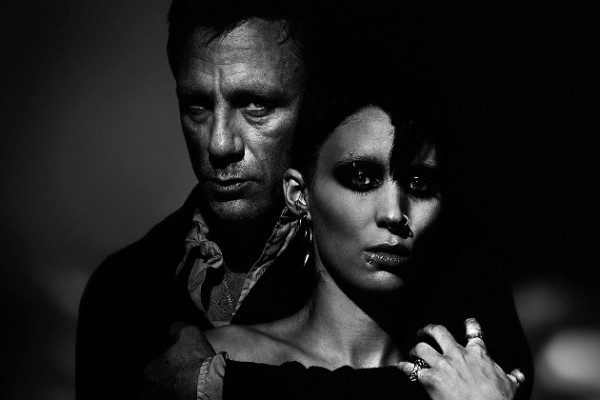With the onset of Prisma, the users are involved in the artistic/creative processes like never before but there is also the chance that it places amateurs on the same ground as the real artist, says Barnamala Roy.
The first time I chanced upon the Prisma watermark on an acquaintance’s display photo on Facebook I was far from impressed, dismissing it as another of those fads doing the rounds on social media that redoes one’s photo in sketch or caricature. With the number of filters teeming (currently over 30), Prisma has been easily mistaken for Instagram or other Apps offered for download on Google Store like Cymera and still attained as many as 1 billion users globally. Developed by founders based in Moscow, Prisma freshly recreates the image passed through its filters using artificial intelligence and, as reported to The Guardian by co-founder, Alexey Moiseenkov: “We draw something like a real artist would.”
Prisma and ‘Pastiche’
The App can process the picture on the model of a distinguished painting by Picasso, Gauguin or Van Gogh much to the glee of the user who had forever fancied being portrayed by the stalwarts. Prisma has rekindled imaginations globally by augmenting photos from daily life. Two Prisma creations which appeared on my Newsfeed successively were that of an Indian style toilet flanked by a mug of water and a Claude Monet- Houses of Parliament, London. The former had been passed through the ‘Gothic filter’ while algorithmic manipulations had rendered a Picasso flavour to the original Monet. While the fusion of two artistic styles in the latter (Picasso’s Cubism on Monet’s Impressionism) paves the way for umpteenth interpretative possibilities within Prisma’s oeuvre, the ‘Gothic’ toilet illustrates the App’s affinity for blending the high (artistic) and the low (commonplace). This blending, identified as a typical postmodern feature by theorists, has been practiced in all forms of visual arts for sometime with the urinals invading the museum. Recently, a toilet themed restaurant made it to the news which even serve dishes that resemble poop in texture and form. This leads us to an exploration of how Prisma’s processing is also informed by the elementally postmodernist ‘pastiche’ (Frederick Jameson’s coinage).
While Pokémon Go’s craze (running parallel to Prisma) has been attributed to its advanced deploying of simulacra, Prisma performs ‘pastiche’ which Frederic Jameson introduced as a celebration of an original art form by adopting its stylistic features but deviating from a parodied rendition that chiefly engages in mockery of the original.
Parody, while mimicking the style of a masterpiece erupts in laughter and is barely divested of the individualism of the parodist, rather impressing upon it- for instance, remixes of erstwhile Bollywood hits. ‘Pastiche’ is peculiar to the consumer culture of a capitalist society where the subject has long lost the sanctity required for maintaining of its selfhood but engages in ‘intersubjectivity’ for the demands of the form. Such heterogeneity sustains the marketing of Prisma and not only does it familiarize users to major artworks, it also contains the possibility to defamiliarise by superimposition of artistry.
The ‘Interactive Art’ of Prisma
Prisma also largely furthers the practice of ‘interactive art’ through which the audience (in this case the App’s user) becomes the participant. The process of creation is traceable in the trial-and-error of applying filters till it is aesthetically satisfying for the user much like the motif of interactive art which aspires to absorb the audience in the creativity of the artist. I’m reminded of artist Garip Ay’s video in this context which recently went viral on social media where he wants the audience to follow his ‘Ebru’ rendition of Van Gogh’s Starry Night. ‘Ebru’, etymologically meaning “face of water”, involves marbling on water and preserving the impressions on paper. Garip meticulously paints Starry Night then, dissolves the whole art in water to recreate a portrait of Van Gogh over it. Thus, he uses the water as a palimpsest and his artistic ethic involves distortion of images to create something and then trying the opposite. His motto of not being limited to any one form or style of art is iterative of Prisma’s algorithms articulated by artificial intelligence and neural networks.
Prisma’s features are developing and the founder has announced the avalaibility of a video option in the near future where a series of photos will be played in high speed and the frames can be edited manually by splitting them up. A 360 degree demo of this video feature to be launched is available on the co-founder Moiseenkov’s Facebook profile. This feature is being introduced to aid users who have already tried painstakingly to tackle each image and combine the frames into video.
Digitalisation of photos has reduced much the anxiety of preserving a memory through ready documentation on social media or storage devices and, when the labour of developing photographs from their negatives in the darkroom is almost on the verge of loss, the labour seems to have been technologically altered and appropriated by Prisma.
While waiting for the server to process the image through the filter(s) applied, the users are involved in the (artistic/creative?) process like never before. The previously evoked reaction by a painting for the audience is being transformed interestingly into a response to reality instead, through art, in the audience-cum-users of Prisma. This is what happens when we apply The Scream filter (painting by Edvard Munch) on the photo of a traffic jam on the streets.
Prisma: Artistry or Craftsmanship?
In view of the ongoing speculations about the furure of art, whether technologically created Apps like Prisma can offer and, if I dare say, substitute the artist’s role demands our thought. Will the artists’ future lie in incorporating the digital to manufacture a master piece? Would that make them essentially artists or craftsmen? These questions also veer around the invention of app-s everyday like a 3 Dimensional one developed by Adobe and Nvidia that simulates oil paintings texturally and pretty much allows the user the functions of a normal brush- dabbing, blending, smearing across the canvas. The article which reports the launch of this App says, “All that’s missing is a virtual Oculus Rift experience involving cutting off your own ear, so everyone can pretend to be the next van Gogh.” While an essential tool for artists in that it lessens wastage of canvases, it also places amateurs on the same ground as the real artist.
Prisma’s Social Role
Speculating also on the positive possibilities of Prisma in its difference from close similars, it is quite pertinent to wonder if it is deviating from egocentrism deeply invested in say an editing app like Cymera. Cymera’s ‘Beautify’ options, for instance, widens your natural smile, enhances your eyes, straightens/ plucks your eyebrows, lightens your skin tone, removes spots on your complexion and even redoes your hairstyle. Quite the selfies-takers’ dream-come-true. Recently, I came across a problematic video advertising a similar Editing App which accomplishes insta-makeup of the woman taking a selfie, who can then appear in her perfect best in the whatsapp-ed photo to her boyfriend- even as she lies under the covers before going to sleep. Through this, the unnaturality of the act is not only underlined but it also continues the age old notions of the woman’s body as a commodity of fetish propoagated more wildly in consumer culture.Self-editing to attain an aesthetic high at least seems to have gained lesser prominence in Prisma driven mainly by the impulse of filtering any and every image and effectively diverse ones.
Postmodern art has aimed at ‘historicising’ or portrayed a future premonition, taking as its subject/object of depiction- issues of national/global urgency or topics of cultural significance. Performance through body art, though still continuining renovatively, has come to a passé. Now, art installations have cropped up across the globe to address climate changes-in the demonstrations with ice carried from Greenland to simulate icebergs by artist Olafur Eliasson and geologist Minik Rosing on the Paris streets named Ice Watch. In Jitish Kallat’s depiction of Jawaharlal Nehru’s speech on the night of India’s independence, he has constructed every letter of the speech with glass fibre and shelved them to form his masterpiece named Public Notice 1 (2003). Artist Subodh Gupta has similar art-installation exhibitions, namely one in National Gallery of Modern Art (NGMA) in Delhi where the top half of a yellow taxi loaded with a lugguage of bronze blocks forms the exhibition’s title piece, according to BBC reports.
While installation art reaches its zenith outside the reaches of the digital in this historicising impulse, what are the newer sensibilities in art achievable in digitalised form? Can Prisma, as the new artist, contribute to social constructivity in the virtual realm?
What if war journalists or those who happen to photograph sites of crimes, calamities or accidents started filtering their photos through Prisma? A social rennovative campaign has been doing the rounds on social media, where to impress the horror of the victims, the faces of well loved celebrities from India like Shah Rukh Khan or Aiswarya Rai were rendered pellet stricken like the commoners at Kashmir. Perhaps to arouse the country from its complacency or espouse social sensitivity which is increasingly being confined to hashtagged solidarity on Facebook. In view of that and thinking of how Prisma can prove socially relevant in similar contexts, I particularly shuddered as a pellet invaded eye of a Kashmir youth augmented into a Picasso by Prisma kindled my imagination-I wondered at the ethicality of actually attempting it. There hangs a sketch atop my study table , dabbed with a few brush strokes of haphazard colour, created with MS Paint almost 15 years back as a child- the content being the airplane crashing into the World Trade Center. The painting done in the context of the tragedy had been handed to me by my tutor in print as a token of appreciation. Last day, I photographed this painting on my mobile camera and ran it through the Prisma filter ‘Dreams’. Already distanced by the MS Paint portrayal of it, doubly filtering through an App meant for augmenting photographs rendered it almost dream-like (as per the filter’s motif), unhinging the tragedy from the domain of the real. Every nation mourns the collective tragedies of its past by preserving the horror of it in memory through all forms of art.
In the digital age, are we downplaying misery in the overemphasis of it through the immediate and constant flow of visuals? Can the horror not sink in adequately because it is being augmented before it can be realised and memorised?
A “real artist”, along whose motifs co-founder Alexey Moiseenkov seems to have modelled Prisma, has always gone beyond providing simple aethestic pleasure. It remains to be seen if Prisma- whom I may dare call the new artist- will merely add to the avanlache of visuals that impress, getting caught up in the rush to maintain market viability and not explore the potentialities inherent in similar app-s to perform a more formative role socially.














